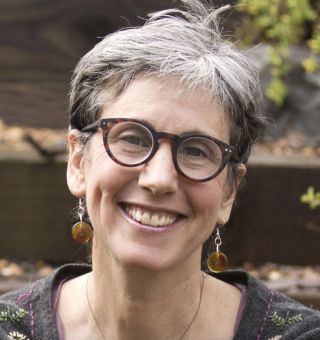Play
Infinite Play: Training for the Unexpected
Play philosopher and therapist Gwen Gordon on healing the world and ourselves.
Posted July 22, 2024 Reviewed by Tyler Woods
Key points
- If we don’t feel safe, we see the world as a battleground, where everything is a threat.
- Infinite play includes everything. There’s no winner or loser.
- Modernity relies on exploitation and extraction for constant growth; it’s a finite game on the planet.
Gwen Gordon is an Emmy Award-winning creative director, trauma therapist, and philosopher of play who began her career building Muppets for Sesame Street. Her research has taken her from the MIT Media Lab to Xerox PARC to the prison at San Quentin, working with research scientists and prison inmates, as well as mainstream corporate gigs and not-for-profit hospital work with children with HIV/AIDS. Gordon has consulted on several popular films, including What the Bleep Do We Know?! and The Story of Stuff, and her peer-reviewed articles have appeared in the Journal for Humanistic Psychology, Play and Culture Studies, and the American Journal of Play.
We spoke from her home in Marin County about the difference between "finite" and "infinite play," her healing work with trauma patients, and ways to turn today's "battleground" psychology into a "playground" mentality where both sides can win.

Mark Matousek: You’ve said that the same dynamics that produce novelty in the cosmos are present in the artist’s studio, in a jazz music jam, and on the preschool playground. Can you say more about that?
Gwen Gordon: The universe is trying everything. There are no limits. It’s just wild experimentation—unbridled. Try this. Try this. Wait—we can use this for another purpose. These fins emerged in fish, but we can probably turn them into wings for play, or for birds. This improvisational impulse is just coming from the froth of the life force. It’s eros. We’re participating in evolutionary dynamics when we’re playing in ways that increase the potential for more play and don’t turn into evolutionary dead ends. By staying flexible and open and available for meeting each thing as a potential playmate—not as a threat, which closes things down—those are the conditions in which we continually increase the possibilities for more play.
MM: How does this relate more broadly to personal evolution?
GG: One of the stories I like to tell about how I got interested in play comes from when I was in my 20s. I was on my way to an ashram, to live at Kripalu for a few years. My sister was the world champion freestyle skydiver five years in a row, Women’s World Champion. She convinced me to jump out of an airplane with her. The instructor says—you have a tandem master, so you're strapped to somebody—“There are only two things to remember. Let go of the airplane wing and breathe. By the way, hold on to the rip cord because they cost $25 and we hate it when we lose them.”
We get up there. The plane is like a sardine can. It’s rattling like crazy. I’m not sure if I’m safer in it or out of it. When it's time to jump, we sidle over to the airplane wing like beetles in heat, and the tandem master says, “Let go.” Everything in my body and 150 million years of genetic memory is saying, “Absolutely, under no circumstances whatsoever, let go.” When I did go, it was an explosion of sensation. I’m just getting knocked around and overwhelmed. No one told me how cold it would be, how loud it would be. Have you ever jumped out of an airplane?
MM: You couldn’t pay me.
GG: Anyway, I’m just completely overwhelmed. I see my sister, and she’s doing these acrobatics. Just like an animal released from captivity, she’s just like, “Whoa!” She swoops over and gives me a kiss on the cheek, and then she leaves. I’m like, “What was that second thing? Oh, right, breathe.” I’m just a hunk of biomass succumbing to gravity, and she’s just this gorgeous flying dancer. We land safely. Oh, by the way, I’m holding on to the ripcord. Eventually, the tandem master says, “You can let go of my thumb now!”
Eventually, I began a spiritual practice, and my teacher told me there are only two things to remember: Let go. And breathe. I was like, “That’s it.” What I was seeing was what it would be like to live in free fall, but without the fear and the bracing that I had when I was falling. I was like, “Oh, I see!” And my sister in free fall was like, “Wow, what if you could live with that much uncertainty, that much release, that much surrender, and be dancing and just enjoying yourself and relaxed and on the way?”
It occurred to me that the people I know who are most spiritually mature are in that state. They’re the most playful. Everything is play. It’s not to be braced against. It’s to be welcomed and included on the playground.
MM: What do you mean by the difference between infinite play and finite play?
GG: Not all play is connected to freedom, as James Carse’s work shows. Infinite play includes everything. Its purpose is to continue the play, and there’s no winner or loser—versus finite play, which is the opposite. Which type we prefer is associated with how we see the world and how safe we feel. We are free to play to the extent that we feel safe. If we don’t feel safe, if we’re very insecure, we see the world as a battleground where everything is a threat. This is connected to attachment styles, of course. So, if we’re anxious, if our sense of safety was very conditional, and we had to test it and we were tested, then the world is a proving ground where we have to continually prove that we’re safe and find safety and feel anxious about it. But there is another kind of mindset, the playground mindset, where everything is included in the play. That has to do with an ultimate sense of safety, which is really what comes with wisdom.
MM: You once said that play puts us in training for the unexpected. What did you mean?
GG: I believe it was Marc Bekoff who first said that. He’s an evolutionary biologist who studied play in dogs and animals. Play trains us for the unexpected. One of the examples that’s often used is mountain goats. By frolicking, they put themselves in tricky positions because it normalizes risks. For us, when we take risks and try things that build new muscles and help us feel comfortable with experiences that are out of the regular regimen of life, it breaks the frame of our habits and gives us a wider repertoire of possible responses to the world. When the baby mountain goat is on a cliff and it stumbles, it will have already practiced catching itself a thousand times while it was playing.
MM: Play is a risk-free environment where we can make mistakes?
GG: Yes. We're building a wider repertoire by playing make-believe, stepping inside a whole other identity in order to try that on. That’s practice for empathy and trying on different attitudes. Generally speaking, when you continue to break your own frames, it makes you more adaptable and trains you for the unexpected.
MM: One last question. How did you shift from play into trauma work?
GG: I reached the limit of what I saw as possible. Play, for me, was always about freedom and fullness, being 100 percent here, and allowing life to move through us, being fully connected and related. But I played out how far I could go with play as a path toward freedom. I found myself getting pigeonholed into play and the tyranny of fun. But play isn’t just about having fun. Play is about everything. As I became more of an activist, and more aware of my early childhood and developmental trauma, I saw the blocks in myself. This helped me find where my heart truly is: in the deepest healing and awakening. In understanding the core issues blocking my own play, I realized that is what I can do for other people: liberate their free play.




